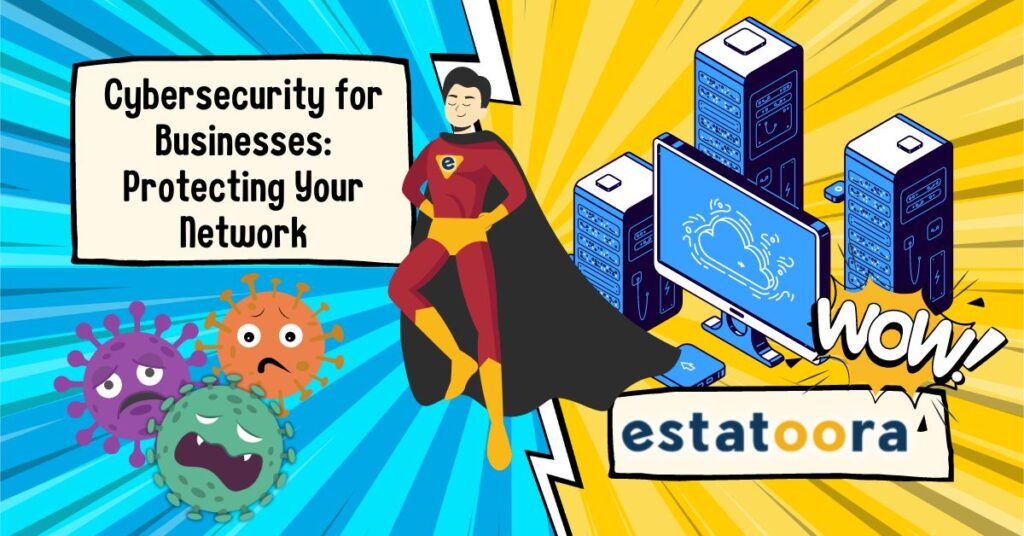
In today’s interconnected digital landscape, cybersecurity is no longer optional – it’s a top priority for any business that wants to safeguard its assets, protect sensitive data, and maintain customer trust. Cyberattacks are increasing in both frequency and sophistication, targeting businesses of all sizes. A robust network security strategy is essential to defend against these threats and minimize the potentially devastating impact of a successful breach.
Understanding the Risks
Cybersecurity for Businesses: Protecting Your Network Content Guide
Cyber attackers employ a range of tactics aimed at exploiting vulnerabilities in your network. Here are some common threats businesses face:
- Malware: Malicious software like viruses, worms, ransomware, and spyware can infiltrate your network, steal data, hold systems hostage, or disrupt operations.
- Phishing Attacks: Fraudulent emails or websites designed to trick employees into divulging sensitive information like login credentials or financial data.
- Data Breaches: Unauthorized access to your network where sensitive data is stolen. This can include customer information, financial records, intellectual property, or trade secrets.
- Denial-of-Service (DoS) Attacks: These overwhelm your network with traffic, making it inaccessible to legitimate users, disrupting business operations.
- Zero-Day Attacks: Exploits against software vulnerabilities that haven’t been patched by the vendor, leaving businesses susceptible to attack.
Consequences of a Security Breach
The impact of a cyberattack on your business can be far-reaching and severe:
- Financial Losses: Direct costs related to data recovery, system repairs, ransomware payments, and lost productivity can be substantial.
- Reputational Damage: A security breach can erode customer trust, negatively impacting your reputation and making it difficult to attract new business.
- Legal and Regulatory Penalties: Depending on the nature of the data breach and your industry, you may face hefty fines and penalties for non-compliance with data privacy regulations.
- Operational Disruption: Cyberattacks can cripple your network, halting business operations and leading to prolonged downtime.
Building a Strong Defense: Key Components of Network Security
Protecting your business network requires a multi-layered approach that combines technical safeguards with employee education and proactive security practices.
-
Firewalls
A firewall acts as a gatekeeper for your network, filtering incoming and outgoing traffic based on predetermined security rules. Invest in a next-generation firewall that provides more advanced features like intrusion detection and prevention (IDS/IPS), application control, and web filtering.
-
Antivirus and Antimalware Software
Install reputable antivirus and antimalware solutions on all endpoints (computers, servers, mobile devices) within your network. Ensure these tools are regularly updated with the latest virus definitions and schedule automatic scans to detect and quarantine malicious software.
-
Strong Passwords and Authentication
Enforce strong password policies that require employees to use complex passwords that include a mix of uppercase, lowercase, numbers, and symbols. Consider implementing multi-factor authentication (MFA), which adds an extra layer of security by requiring users to provide an additional form of verification, such as a code sent to their phone or a fingerprint scan.
-
Data Encryption
Encrypt sensitive data both in transit (when being transmitted over the network) and at rest (when stored on devices or servers). This ensures that even if data is intercepted or stolen, it remains unreadable to unauthorized parties.
-
Network Segmentation
Divide your network into smaller segments using VLANs or subnets. This limits the potential spread of malware and makes it easier to isolate infected systems, containing the damage of a security breach.
-
Vulnerability Scanning and Patch Management
Regularly scan your network for vulnerabilities in software and hardware. Implement a rigorous patch management process to promptly install security updates and patches released by vendors to address known vulnerabilities.
-
Employee Security Awareness Training
Your employees are your first line of defense against cyberattacks. Implement mandatory security awareness training programs that educate staff about common threats like phishing scams, social engineering tactics, and password best practices. Conduct regular refresher training and simulated phishing exercises to reinforce good security habits.
-
Incident Response Plan
Have a well-defined incident response plan in place that outlines the steps to take in the event of a suspected or confirmed security breach. This plan should include clear roles and responsibilities, procedures for reporting incidents, containment and eradication strategies, data recovery processes, and a communication plan for notifying relevant stakeholders.
-
Regular Security Audits and Risk Assessments
Conduct periodic security audits to evaluate the effectiveness of your cybersecurity measures and identify potential weaknesses. Engage with a third-party cybersecurity firm for a comprehensive assessment to gain an unbiased perspective on your security posture.
-
Data Backup and Disaster Recovery
Have a robust data backup and disaster recovery plan in place to ensure you can recover critical data and systems in the event of a cyberattack, natural disaster, or other disruptive event. Regularly test your backups to ensure data can be successfully restored. Consider off-site or cloud-based backups for added protection.
Additional Cybersecurity Best Practices
- Secure Wireless Networks: Properly configure your WiFi network with WPA2 or WPA3 encryption and strong passwords. Segment guest WiFi from your main business network for added security.
- Control Access Privileges: Implement the principle of least privilege, granting users only the level of access they need to perform their job duties.
- Monitor Network Activity: Utilize network monitoring tools to detect unusual activity that might indicate a security breach.
- Restrict Physical Access: Control physical access to network equipment, servers, and data centers to prevent unauthorized tampering.
- Stay Informed: Subscribe to cybersecurity alerts and advisories from reputable sources to stay updated on the latest threats and vulnerabilities.
The Role of Third-Party Cybersecurity Providers
Partnering with a managed security service provider (MSSP) or cybersecurity consulting firm can significantly enhance your security posture. These providers offer a range of services, including:
- Vulnerability Assessments and Penetration Testing: In-depth testing to proactively identify weaknesses in your network before attackers can exploit them.
- Managed Security Services: Outsourced monitoring, intrusion detection, and threat response, providing 24/7 protection.
- Incident Response Support: Expert assistance in the event of a breach to minimize damage and restore operations quickly.
- Compliance Consulting: Guidance on meeting industry-specific regulations like HIPAA, PCI DSS, or GDPR for businesses handling sensitive data.
Don’t leave your business vulnerable to cyberattacks. Contact Estatech today for a comprehensive cybersecurity assessment and protect your assets.
Final Thoughts
Cybersecurity is an ongoing process, not a one-time project. As the threat landscape continues to evolve, it’s crucial for businesses to stay vigilant, adapt their defenses, and regularly review their security posture. By investing in a multifaceted cybersecurity strategy, implementing best practices, and educating your employees, you significantly reduce the risk of a damaging cyberattack and protect the long-term success of your business.




